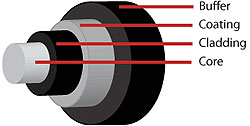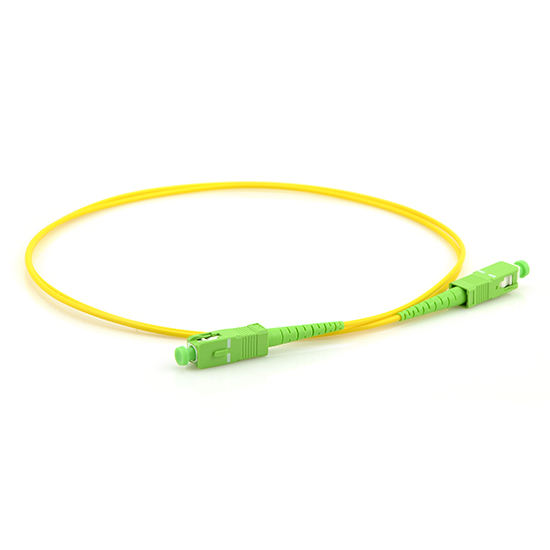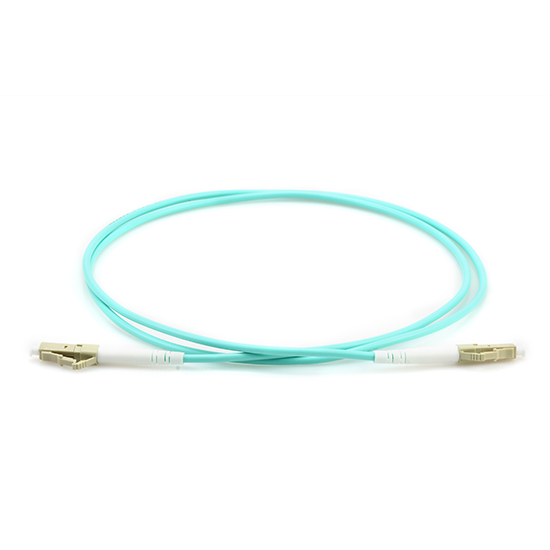We have gone into detail about the differences between Singlemode and Multi-mode fiber optic cable in a previous article (here). But how about Singlemode and Multi-mode fiber optic patch cables – or jumper cables as they are often called?
Let’s get down to the core of the matter:
 Of course, it’s the core of fiber cables that carries the light to transmit data – and the main difference between Singlemode and Multi-mode fiber patch cables is the size of their respective cores.
Of course, it’s the core of fiber cables that carries the light to transmit data – and the main difference between Singlemode and Multi-mode fiber patch cables is the size of their respective cores.
Singlemode cables have a core of 8 to 10 microns. In singlemode cables, light travels toward the center of the core in a single wavelength. This focusing of light allows the signal to travel over longer distances without a loss of signal quality than is possible with Multi-mode cabling. Most Singlemode cabling is color-coded yellow.
Multi-mode cables have a core of either 50 or 62.5 microns. In Multi-mode cables, the larger core gathers more light compared to Singlemode, and this light reflects off the core and allows more signals to be transmitted. Although more cost-effective than Singlemode, Multi-mode cabling does not maintain signal quality over long distances. Multimode cables are generally color-coded orange or aqua; the Aqua Fiber Patch Cables are for higher performance 10Gbps, 40Gbps, and 100Gbps Ethernet and fiber channel applications.
While you’re at it, check out our Pigtails
Q: Which is better? A: It depends on your application:
 Singlemode Fiber Patch Cables are the best choice for transmitting data over long distances. They are usually used for connections over large areas, such as college campuses and remote offices. They have a higher bandwidth than Multi-mode cables to deliver up to twice the throughput.
Singlemode Fiber Patch Cables are the best choice for transmitting data over long distances. They are usually used for connections over large areas, such as college campuses and remote offices. They have a higher bandwidth than Multi-mode cables to deliver up to twice the throughput.
 Multimode Fiber Patch Cables are a good choice for transmitting data and voice signals over shorter distances. They are typically used for data and audio/visual applications in local-area networks and connections within buildings or remote office in close proximity to one another.
Multimode Fiber Patch Cables are a good choice for transmitting data and voice signals over shorter distances. They are typically used for data and audio/visual applications in local-area networks and connections within buildings or remote office in close proximity to one another.
Lesson:
Use Multi-mode to transmit data over short distances (LESS than ~500 meters, 1,600 feet, 1/3 of a mile)
Use Singlemode to transmit data over long distances (MORE than ~500 meters, 1,600 feet, 1/3 of a mile)
